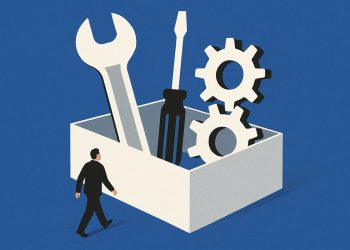When AI models forget previously learned skills after an update, the phenomenon is known as catastrophic forgetting. This critical issue can erase up to 40% of a model’s knowledge from a single update, according to a 2025 survey in Learning and Memory: A Comprehensive Reference. As a core part of the Continual Learning Problem, this challenge requires specialized engineering solutions to prevent knowledge loss. As practical guidance matures, organizations are beginning to implement these strategies in production environments.
Why catastrophic forgetting happens
Catastrophic forgetting is an inherent risk in how neural networks learn. The model’s parameters are adjusted to optimize for the newest training data, causing them to “drift” away from the optimal settings for previous tasks. Without mitigation, this drift leads to significant performance degradation on older skills. For example, simple image classification models can see accuracy drop by 15-30 points after an update, a problem mirrored in large language models fine-tuned on new text (Splunk primer).
Catastrophic forgetting occurs because a neural network’s parameters are overwritten to accommodate new information. This optimization process does not inherently protect the connections that store previous knowledge. As the model adjusts to learn new tasks, it can unintentionally degrade or erase the pathways that enabled older skills.
Techniques to Stabilize AI Memory
Engineers employ several key strategies to combat catastrophic forgetting. Elastic Weight Consolidation (EWC) protects crucial parameters by penalizing changes to weights important for past tasks, which can halve forgetting according to a 2025 benchmark study (foundation model study). Replay strategies, which mix small batches of historical data into new training sets, are a highly effective and common production solution. Companies often retain 1-5% of past data to balance performance and cost. Dynamic architectures offer another path, such as stacking smaller, frozen sub-models to add new capabilities without altering the original model’s reasoning skills.
Advanced Solutions: Adaptive Architectures
More advanced techniques involve separating memory from the core model. External memory vaults, such as temporal knowledge graphs or short-term caches, provide context without altering the model itself. Hybrid systems can query both the model and these vaults to generate more informed answers. A more cost-effective approach is parameter-efficient fine-tuning (PEFT). Methods like LoRA and QLoRA freeze the main model and train only small, attachable adapter matrices, reducing update-related GPU costs by up to 90%.
Implementation Checklist for Continual Learning
- Replay Buffer: Curate a set of high-impact historical examples to mix into training.
- Regularization: Implement a method like EWC and tune its penalty strength for each task.
- PEFT First: Use parameter-efficient adapters before considering a full model retrain.
- Benchmark: Continuously test the updated model against a frozen baseline to catch regressions.
Open Challenges in Continual Learning
Despite progress, significant challenges remain. Privacy and governance are major concerns, as storing user data for replay or in memory vaults requires robust audit trails and access controls. Scalability is another issue; external knowledge graphs must deliver information in under 50 milliseconds for real-time applications, a target that’s difficult with frequent data updates. Finally, the field needs universal metrics that connect scientific benchmarks with key business performance indicators (KPIs) like revenue or operational efficiency.
What is “catastrophic forgetting” and why does it make AI updates risky?
When a neural network is re-trained on new data it can overwrite the connections that encoded earlier skills. In production this shows up as a model that suddenly drops 30-40% accuracy on yesterday’s tasks even though it just got better at today’s. The risk is highest for organizations that add new document types, regulations, or product catalogs every quarter; the model appears to “learn” but actually swaps old knowledge for new unless the training recipe is changed.
Which techniques keep old knowledge intact while new data arrives?
Three families are now common in 2025 pipelines:
- Replay buffers – store a small, curated sample of older inputs and mix them into every update batch (continual learning survey)
- Parameter regularizers – Elastic Weight Consolidation locks the most important weights found during previous training
- Growing architectures – extra modules are stacked instead of overwriting; “Stack-LLM” experiments cut forgetting by half on reading-comprehension tasks (model-growth paper)
Most teams combine two of the three; replay plus lightweight adapters is the cheapest starting point.
How expensive is architected, swappable memory and who is already paying for it?
True “long-term memory” layers – external vector stores, editable knowledge graphs, and audit trails – raise serving cost roughly 2-4× compared to stateless endpoints. Financial and health-tech firms accept the bill because regulatory re-training cycles are even pricier. Early adopters report 15-20% drop in support-ticket escalations after agents can reference every prior customer interaction, offsetting the extra infra spend within two quarters.
Does fine-tuning on each day’s data work right now, or is it still experimental?
Industry playbooks from 2024-2025 treat continual fine-tuning as routine, not science fiction:
- Healthcare companies refresh LLMs on nightly clinical notes
- Legal teams feed new contracts into LoRA adapters weekly
- Customer-service bots ingest chat logs continuously and redeploy with <30 min downtime
The trick is to use parameter-efficient methods (QLoRA, prefix tuning) so a single GPU can finish the job before the next data batch lands. Skipping human-in-the-loop review still risks drift, so most operations insert a 48 h verification window before the refreshed model hits production.
What practical first step should an organization take this quarter if it sees forgetting in its own models?
Start with ingestion-aware fine-tuning today:
- Keep a rolling 5-10% sample of historic gold-standard examples
- Append them to every new training chunk
- Evaluate on both old and new test sets before deployment
Even this mini-replay step halves the accuracy drop reported by many teams and costs almost zero extra compute. Once the pipeline is stable, layer on adapters or external memory – but prove the pain point first with data you already have.
















